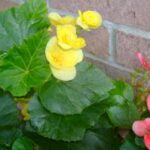Driving around Oklahoma City, Oklahoma during the spring a person may notice a popular flower that is abundant everywhere. Next to begonias, alyssum is the second most sought after plant in Oklahoma, mainly Central Oklahoma. What is Alyssum? Okay, you may have heard it referred to as sweet alyssum, but basically it is a bushy flowering weed to some. The perfect mounds it makes when growing well are a good reason this flower is used as borders in most gardens.
Think of it this way. You are blowing bubbles with your kids and the bubbles are piling up on each other on the cool cement. Before they all pop away you can see this mound of bubbles rising to try and tower higher. This is how alyssum sort of grows. It starts off as a scraggly little fellow, but as time goes on it can become one large dome shaped plant. This is one of the main reasons people love to grow it as a border in their gardens. Another good reason is because these flowers come in so many colors.
Alyssum can be found in colors from white to a deep purple. The most odd one is the muted yellow. An interesting fact about alyssum is that its florets look similar to those of verbena and ______ . You can either plant a single color of these colors or you can choose two or three colors to stagger here and there. Which ever way you choose to plant these, you will be glad you did.
Alyssum is not a heat bearing plant. They can grow on through summer, but you need to keep them watered. Yes, these are best grown in full sun. The more sun, the better for them. Alyssum can thrive in some shade, but only partial. They are not a plant for true shady areas. Since alyssum is mainly a spring and fall flowering plant, a long hot summer without much water will certainly dry them out. You might plan on having a sprinkler system installed if you want these flowers to survive a long hot summer.
Seeding very well on its own, you may want to keep your potted plants and areas where you don’t want alyssum to grow under a watchful eye. Before you know it you may have alyssum growing all over the place. This is why some people refer to alyssum as the “sweet weed.” You may like the fragrance of them, but you need to watch where they spread off to. A good gardener will soon be able to tell the difference between what they are trying to grow and the seedlings of the sweet alyssum.
Tree borders are not as popular as they used to be in the past. As more people are becoming more educated on the types of grasses that grow well in their area, the less alyssum and other tree bordering plants are being used. One of the most captivating borders of alyssum may have colored rings of this mounding flower growing around them. This was a popular trend a couple of decades ago that seems to be coming back. A set of three rings is enough, but if you have enough area under your tree you can go well beyond that.
Another way of using alyssum as a border is to plant it around the stone steps leading up to the garden you have, or even within the garden itself. You can actually trim alyssum back as it will re-grow back out to try and take over once again. A manicured bordered walk is quite an eye opener. As with any plant. alyssum does come in some varieties. Be careful in choosing them. There are some that are just stalky and don’t bush out at all. You may want to keep track of the plants and see if where you purchased them will take them back if they don’t grow the way you are hoping.
One good way to test your plants’ growth is to dig holes that are two pot sizes larger than the one the plant is going to be in. Set the larger pots down in the hole with a little bit of dirt in the bottom of them. Take the pots with the plants in them and set them centered in the larger pots. Fill in the space with some mulch to keep them warm and from moving. You may have only 30 days to bring the plants back or less, so if they aren’t growing the way you like then notify the garden center at once.
Bordering a fruit and vegetable garden would be a great way to utilize alyssum. Its bushy and shady growth will deter some weeds and grasses. When grown closer together than recommended, alyssum will pretty much take over as a blocking border and no grass or weed will come into your garden through them. It will take seeding of critters to get grass and weed in your garden at that point. Keep in mind that grown in this manner, alyssum will try to take over this garden if you aren’t keeping up with its seedlings.
Walkways and bushes also can be spruced up with borders of alyssum. Just remember that alyssum is not a shade loving plant. They love sun. You may have to keep a journal for a year to see where the sun shines on your yard most of the day to know where to plant alyssum. This may sound like a tedious task, but in the long run you will be glad that you did this. The partially shaded areas could have begonia, dusty miller or violets growing to take up that space. Plan your borders wisely and you will have them to last much longer.





